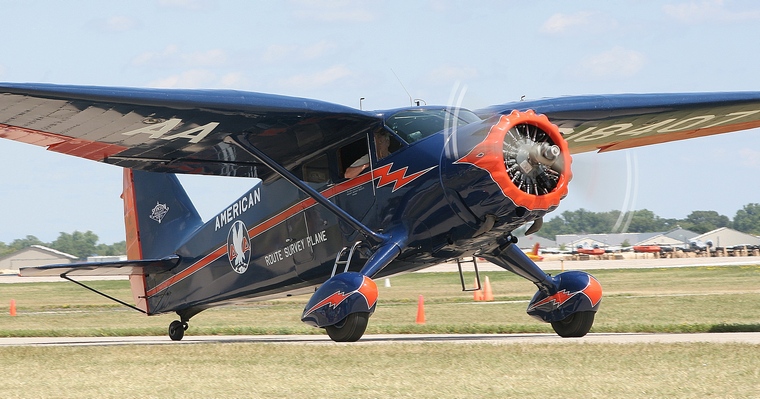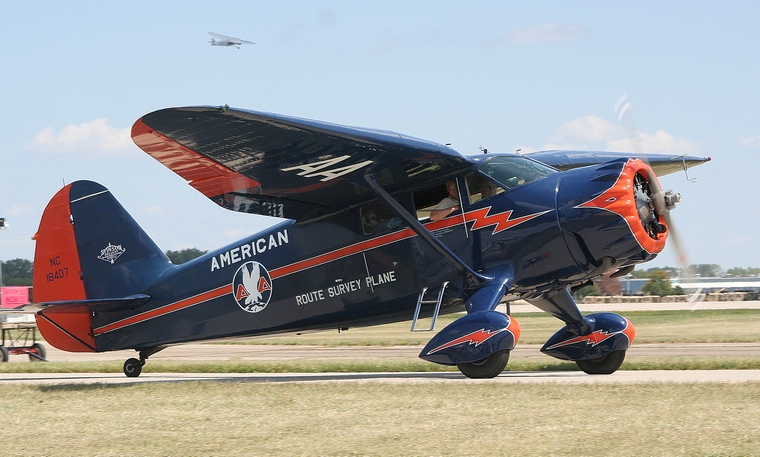EDDIE STINSON, HIGH SCHOOL DROPOUT AND INNOVATOR
By Willie Bodenstein
Edward “Eddie” Stinson was born in 1894, nine years before the first successful flight by the Wright Brothers and in 1911 and only seventeen he was taught to fly the Wrights. Nine years later in 1920 and 26 years old he founded the Stinson Aircraft Company which in the ensuing years produced more than 13,000 aircraft.
Eddie's first time in control of an aircraft was not with the Wright's though. In 1910 at age sixteen and only seven years after the first heavier than air flight he left school he set out to St. Louis, Missouri with one goal in mind, to test fly an aircraft built by a pair of men he has never met. Eddie must have been an exceptional salesman for he convinced the fledging aircraft builders that since they lacked any practical flight experience he was what they were looking for, conveniently forgetting to mentioned that he had never actually seen an aeroplane before. The flight test program as can be expected was not a huge success. With Eddie at the controls the rickety kite like contraption perilously bumped along a farm pasture before briefly and precariously taking to the sky only to crash back to earth loosing a wing as it impacted with mother earth. The disconsolate builders having lost all interest in aviation gave Eddie what was left of their creation as payment starting for what was for him a lifelong vocation.
Eddie, realising that his brief career as a test pilot in no way qualified him to be in control of a aircraft took his life savings and left for Ohio and the Wright Brothers flying school in Dayton where he graduated and quickly became famous as many other young men and woman at that time did as a stunt pilot and barnstormer.

In 1915 the family settled in San Antonio, Texas where Eddie and his two sisters, Katherine and Marjorie started the Stinson School of Aviation. Katherine who in 1912 became only the 4th woman in the USA to fly and Marjorie the ninth were skilled pilots and aviation pioneers in their own right. Business boomed with America's entry into WWI as the Stinson's started training pilots for the US Army and Canadian Forces. In 1920 Eddie relocated to Detroit and with the support of a group of local businessmen established the Stinson Aircraft Syndicate. In January 1926 with $25,000 raised from the syndicate Stinson Aircraft revealed its first model, the Stinson SM-1 Detroiter.
The Detroiter, powered by either a Wright J-5 (SB-1) or Wright J-6 (SB-1D) included many first including wheel brakes, electric starter and a heated and sound proofed cabin and the order book quickly filled enabling Eddie to raise an additional $150,000 and to incorporate the syndicate and form the Stinson Aircraft Corporation which in its first year of operation sold ten Detroiters. . Despite the blossoming business Eddie continued his career as a stunt pilot earning as much as $100,000 a year, a king's ransom in those days. The SM-2 Junior a high wing monoplane seating three or four followed and by 1929 the corporation had sold 121 aircraft.
In September 1929 the automobile mogul E. L. Cord purchased 60% of the shares in the corporation and this cash injection allowed Stinson to pursue the development of new models and by 1930 in the height of the depression buyers had a choice of six models ranging from the Junior to the 6000 tri-motor airliner. New models followed. In 1931 the W was revealed and in the 1932 the R-2/3 powered by either a Wright or Lycoming Radial was offered to buyers. The W and R-2/3 were the predecessors of the aircraft that will always be synonymous with the Stinson name, the Reliant which were introduced in 1933.
Eddie tragically did not live to experience the success of the Reliant. He died on the 26 January 1932 when the Detroiter he was demonstrating experienced engine problems and upon attempting to land on a golf course hit a pole that sheared off a wing. The four prospective clients all survived the accident. At the time of the accident he had accumulated more than 16,000 hours, more than any other pilot at that time.

Despite its high price tag the Reliant that sold for between $10,000 and $18,000 found willing buyers and in a production run starting in 1933 and lasted for eight years until 1941 more than 1320 were sold. The first Reliant released was the SR-1 and each subsequent model released was upgraded and refined with the SR-10, released in 1938 the ultimate in the series. The strikingly handsome SR-10's reliability, range, speed and styling, walnut interior and leather seats and roll down windows made it the aircraft of choice for large corporations to ferry their executives and clients around the country, not unlike today's business jets. The rugged Reliant powered by a nine cylinder Pratt and Whitney Wasp Junior SB radial engine of 400 hp with its welded steel fabric covered fuselage of nearly 28 ft and strut braced 41 ft 7 in tapered gull wing was one of the last taildraggers in its class. Weighing in at 3,045 lb with a maximum take off weight of 4,605 lb It carried its pilot and three to four passengers in opulent luxury and comfort at close to 170 mph on journeys off up to 850 miles.
Eddie's untimely death, the end of WWII and the glut in the aircraft market that followed spelled the end for the Stinson Aircraft Corporation. The Cord Corporation which already held 60% of the shares acquired the remaining shares and later sold to the Aviation Corporation. Consolidated Vultee then acquired the rights before selling to Piper that continued for a limited time to produce the last original Stinson design the 108. Piper however did transform the design for a twin Stinson into the Apache. School dropout and aviation trendsetter Eddie Stinson's name will live on in the many of his designs that are still flying.
|
   |























